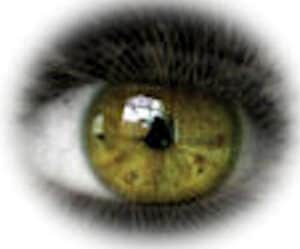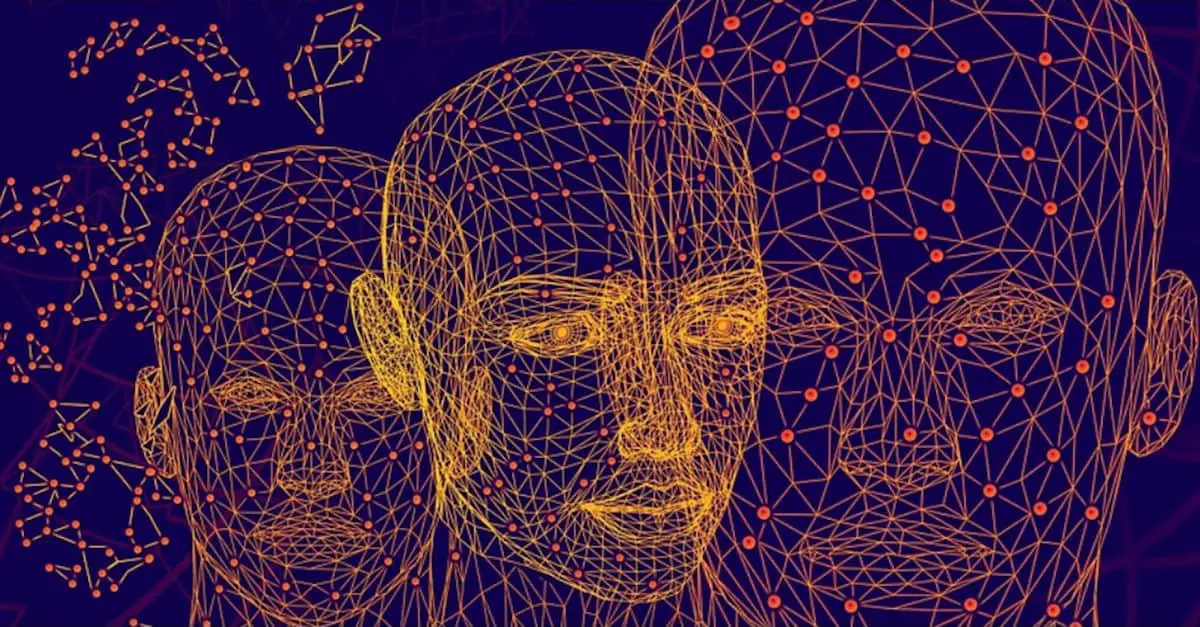Individuals coping with low vision face challenges in visual acuity and stable fixation, making facial recognition particularly difficult. This crucial skill relies on the ability to perceive detail and maintain steady focus for the brain to interpret the visual input.
Recognizing faces is fundamental for successful human interaction, yet it poses a significant hurdle for those with central vision loss. Conditions such as macular degeneration, Stargardt’s disease, and various cone-rod dystrophies are commonly associated with difficulties in facial recognition.
Two Factors Contributing to Decreased Facial Recognition Ability
1. Eccentric viewing. In advanced stages of central vision loss, individuals often rely on a technique known as eccentric viewing, where they use parts of their retina outside the central macula. Eccentric viewing areas are the regions surrounding the central vision area, enabling those with vision impairment to “push” the blind central area aside and focus on objects using these alternative areas. However, due to how the retina is wired to the brain, these peripheral eccentric viewing areas struggle to maintain stable fixation, especially when attempting to focus on a face.
This is a departure from the normal central vision area, which can efficiently lock focus onto a face. The stable fixation in the central vision area allows the brain to more effectively analyze the facial image and make connections to areas of memory.
(Note: This area is often referred to as the preferred retinal locus (PRL), meaning, the visually impaired has learned to use this other area of the retina as the area they prefer to use, rather than the ‘blind’ central vision area.)
Ref: Abnormal Fixation in Individuals With Age-Related Macular Degeneration When Viewing an Image of a Face Optometry and Vision Science.
Optometry and Vision Science.
This leads to the second factor affecting the capability of those with low vision to recognize faces;
2. Acuity. When individuals with low vision use a peripheral viewing area of the retina (PRL) or rely on a blurry central vision area (macula) to gather visual information, the brain struggles to discern the fine details crucial for facial recognition. Unlike the central vision area, the eccentric viewing area lacks the high density of cone neurons necessary for precise line and detail discrimination defined as good acuity.
Facial recognition hinges on the ability to perceive the subtle nuances of different facial structures. However, the brain receives an unstable image due to the lack of finer details, poor visual acuity, making accurate facial recognition challenging.
In an attempt to compensate, individuals with low vision focus on the details they can perceive, often relying on auditory cues as well. They may observe general features such as the shape of the hair, face outline, and height.
For instance, a person with low vision might recognize that an individual has eyes, a nose, and a mouth, but the distinguishing features are unclear and therefore difficult to remember. The unique characteristics of the eyes, nose, and mouth, including their structure and proportions, which are crucial for differentiation, remain obscured.
The Challenge of Facial Expression Interpretation for the Visually Impaired
Facial expressions is a form of nonverbal communication, conveying emotions and signals integral to conversations. The interpretation of facial expressions occurs rapidly and unconsciously, allowing individuals to detect a wide range of emotions and personality traits that may not be apparent from tone of voice or spoken words alone.
Expressions such as happiness, sadness, scorn, fear, surprise, distraction, anger, and various personality characteristics are conveyed through facial cues, enriching the meaning of a conversation and conveying emotions to the listener.
In typical conversations, listeners often mirror the emotions and feelings expressed by the speaker, creating a natural flow of understanding. However, individuals who are visually impaired lack this additional layer of information conveyed through facial expressions. This absence places them at a disadvantage in comprehending and responding appropriately to the emotional context of a conversation.
For those with visual impairment, understanding is primarily reliant on verbal cues such as volume and tone of voice. The inability to “read” facial expressions can lead to misunderstandings where a visually impaired individual may seem inattentive or dismissive of the speaker’s emotions or intentions.
Consequently, relying solely on verbal cues can make the visually impaired individual feel ill at ease, anxious, or embarrassed in social interactions. It is not uncommon for individuals with low vision to avoid social situations due to the challenges posed by the inability to interpret facial expressions, which are so integral to human communication.
Ref; Role of facial expressions in social interactions
The case for emojis: Think about reading a text message and being unsure of the writer’s intent. You might wonder, ‘Are they angry, joking, sarcastic, or annoyed?’ There is no facial expression or tone of voice to gauge what the writer is conveying. This is the ‘lost’ feeling those with vision impairment feel in some social situations. Luckily for the individual who is texting, they can add in an emoji to clarify their feelings!
The Challenge of Interpreting Facial Expressions for the Visually Impaired
Social embarrassment
Being able to see and recognize a face imparts more than just the speaker’s feelings and emotions. Looking at someone’s face, we can gather important information, like age, gender, and what has that person’s attention (where they are looking.) Embarrassing situations arise from the visually impaired mistaking to whom a question or conversation is being directed, misidentifying someone, or makes a statement which feels out of context to the listener.
Social awkwardness
Eye contact is valued highly in human interaction and communication. Not being able to make eye contact has negative social implications. Others may feel suspect that the visually impaired is hiding something, lying, or very shy if they are unable to make eye contact. This can impact personal and business relationships.
Social anxiety
Unable to identify and read faces makes social situations a minefield. The visually disabled person starts to lose confidence and become anxious when expected to interact with more than one person. This often results in them avoiding social situations.
Social isolation
The inability to recognize faces handicaps social interaction and is a contributing factor to the social isolation often experienced by the visually disabled. The inability to fully enjoy social interaction by being able to gather and gauge the non-verbal cues and reactions with appropriate eye contact, makes the visually disabled feel like they are ‘alone in a crowd.’
Other articles that are related:
How Vision Loss Affects the Social, Emotional, and Practical Aspects of Life
Low Vision, Depression, and Anxiety
A note about movies:
The Challenge of Enjoying Movies for the Visually Impaired
One significant hurdle is the visually impaired is difficulty in interpreting facial expressions, a crucial aspect of understanding and enjoying a film. When these expressions are not fully discernible, visually impaired viewers may struggle to follow the storyline or connect with the characters on an emotional level.
Additionally, movies often rely on visual cues for storytelling, including subtle gestures, body language, and scene transitions. These visual elements, while adding depth to the film, can be challenging for individuals with low vision to fully grasp.
Audio descriptions, which provide narrated descriptions of visual elements during pauses in dialogue, are a helpful accommodation for the visually impaired. However, not all movies offer audio description tracks, limiting accessibility.
As a result, visually impaired individuals may find it frustrating or discouraging to watch movies, as they may miss out on essential elements that sighted viewers take for granted.
(Another pet peeve is: When did they decide that every movie should have subtitles at some point in the film? Rarely does a film come along that doesn’t require reading at some point, which is very difficult for those with vision impairment and those with dyslexia.)
How do those with low vision compensate?
1. Voice recognition. : Smile, say hello, and wait for the other person to begin speaking. This provides auditory cues for recognition.
2. Get closer. Decreasing the distance between yourself and the person you are interacting with, is a form of magnification. A closer distance makes the identifying features easier to see. Fair warning: getting so close as to enter into someone’s personal space can make them uncomfortable and make the interaction feel awkward.
3. Recognizing a person by general, external clues. These are larger details like their height, body structure, the shape of the head, and hair color. This works well for those who you know fairly well and those you interact with frequently.
4. Memorizing. Remembering what someone is wearing, what color it is, and the shape of their hair at that visit. Works well on a short-term basis.
You can also memorize a name and make associations with other features, like where they are typically seated, what their function is (job), or a particular characteristic like a mannerism or speech pattern.
5. A willing partner, friend, or assistant. If the person who often accompanies you understands the dilemma of not being able to instantly recognize someone, a well-versed partner/friend/assistant can be an asset by whispering an identifying name. Not always available, but helpful when they are around.
Facial recognition Technology for the Visually Impaired
Instead of a partner/friend/human assistant, how about artificial intelligence whispering in your ear.
Technology that will act as a personal assistant for face recognition and facial expression reading is on the horizon.
The logistics of developing this system are difficult because it will involve large databases. The system needs to be able to distinguish facial features under different conditions of lighting and at different angles of observation.
The unit would be a smart wearable system with a database of relevant facial images of contacts from which it could identify others and relay this by an ear bud.
Another proposed technology is a smart cane for the blind, which would be armed with a facial recognition system.
Facial recognition and expressions mobile app for the visually impaired.
A low-cost mobile accessibly app is being developed to help the visually impaired with facial recognition of others on their social media feeds. This app will recognize faces from your database and describe facial expressions from pictures on Facebook and other social media sites. (Facebook did have a Face Recognition system, but has shut it down. (11/21))
Ref: A Face Recognition Application for People with Visual Impairments: Understanding Use Beyond the Lab
Do the visually impaired have Prosopagnosia?
It is also referred to as face blindness or facial agnosia. It defines a specific type of loss, one not related to memory or vision impairment. It is specific for damage or a congenital abnormality of a part of the brain called the right fusiform gyrus. This area of the brain is important for the coordination of seeing a face, then tying that face to memory.
So someone who is visually impaired, and is unable to recognize a face, does not have Prosopagnosia.
In the end:
The ability to recognize faces is an integral part of personal, social, and business relationships.
Those with low vision are often socially embarrassed, anxious, and/or fearful because of this handicap. Their ability to communicate is diminished by their inability to read facial expressions.
While they may develop strategies to help themselves to navigate social situations, little fears and a loss of confidence give rise to anxiety and avoidance of social interaction.


